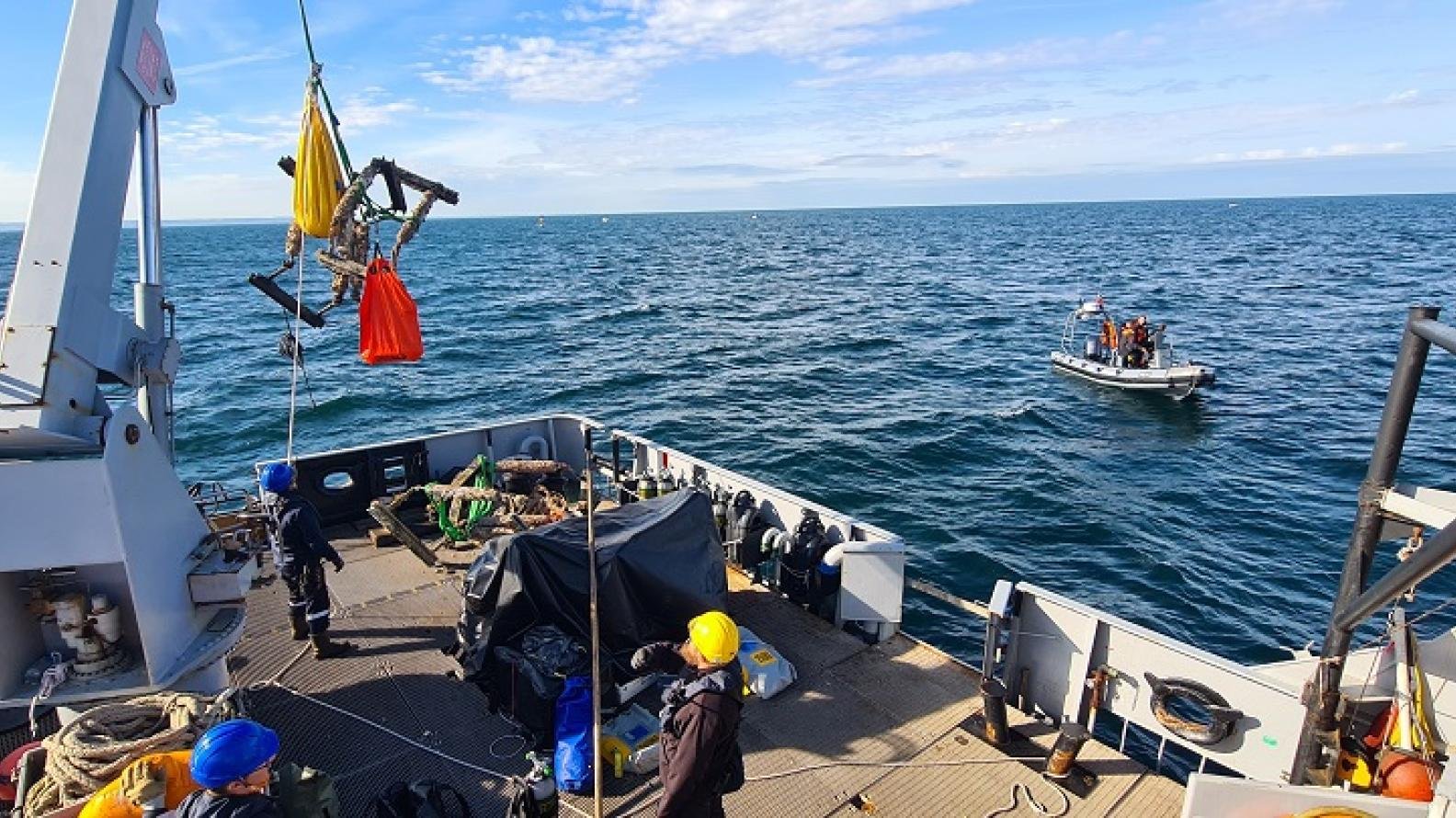Off the coast of Dieppe, the HSM Daffodil, a 107-metre-long ferry-type vessel used to transport rail convoys, struck a mine in 1945. When it sank, the ship was cut into two roughly equal parts that lay at a depth of 26 m. It is the “ideal” wreck for the DRASSM, which wants to conduct a scientific study on underwater cathodic protection.

The idea is to compare the evolution of corrosion on the part of the wreck “protected” by a system of sacrificial anodes, with that of the “unprotected” part. The sacrificial anodes, composed of “soft” metal, are attacked first by corrosion and thus protect the other metal parts of the wreck. An electric field is created around any metal immersed in seawater. The electropositive anode will take most of the electrical charge and corrode, which protects the building from corrosion. It is therefore necessary to change them regularly so that the shell to be protected is not quickly damaged.
Thus, in 2021, several sets of anodes were deposited on the bottom by clearance divers and connected to the forward part of the wreck. Two years later, the Vulcain and the GPD Manche were again asked to remove the device. On 26 September, clearance divers carried out an underwater construction site to find and reassemble all the sacrificial anodes. The DRASSM will now be able to study the effectiveness of this system against corrosion. Depending on the results obtained, some shipwrecks classified as underwater heritage could be the subject of cathodic protection as part of the SOS (Save Our Shipwrecks) project in order to preserve them as best as possible for future generations.

